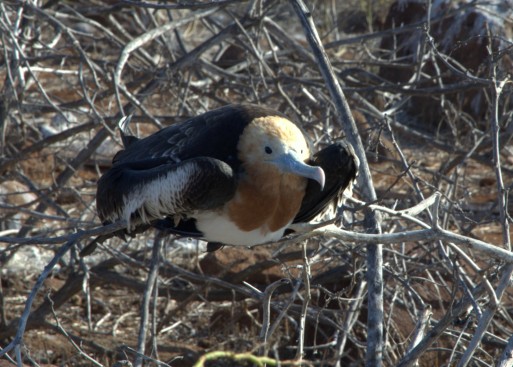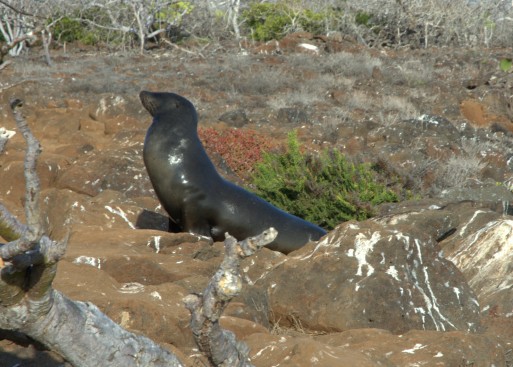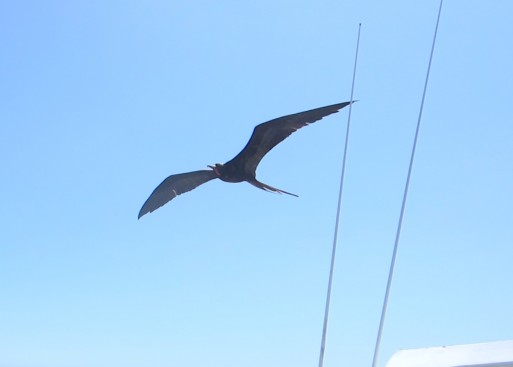
(December 7) Frigate birds swoop around the boat as it travels between the islands.
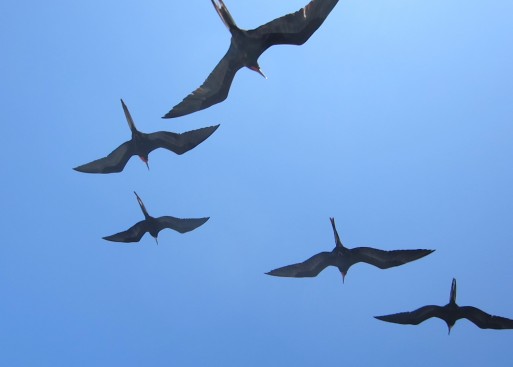
North Seymour is a small flat island with lots of wildlife.

A blue footed booby.
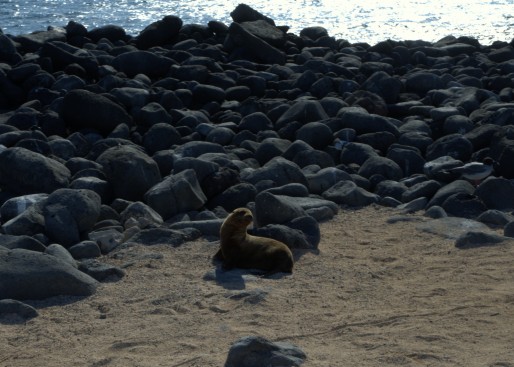

Land iguanas are not native to the island. They were brought here in the 1930s from the nearby island of Baltra.

Since North Seymour Island had never had any giant tortoises or land iguanas the local cactus species grow close to the ground. As a result the introduced land iguanas prospered, becoming big and fat.
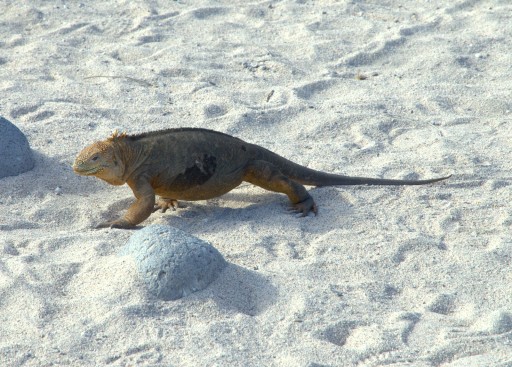
This turned out to be a good thing because in the 1940s the United States leased Baltra Island to build an airbase to defend the Panama Canal from a possible Japanese attack. In the process all the land iguanas on Baltra were wiped out.
Eventually scientists from the Charles Darwin Research Station were able to take land iguanas from North Seymour Island and reintroduce them to Baltra.
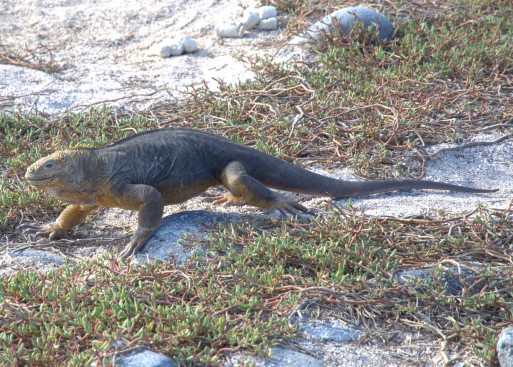
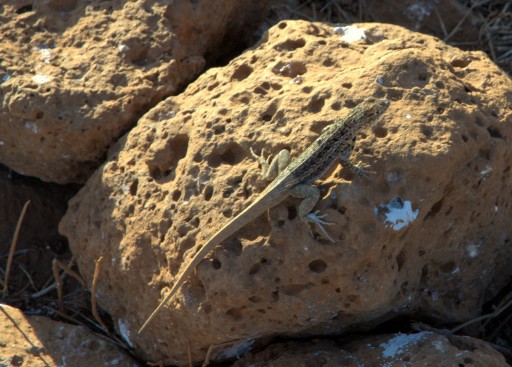
Of course no island in the Galápagos would be complete without lava lizards.

The flat center of the island with its scrubby vegetation provides a fine nesting ground for frigate birds.

In two species of frigate bird, the “great” and the “magnificent,” the males have an inflatable pouch that they use for mating displays.

A male who has not found a mate will sit on the nesting grounds. When a female flies over he will spread his wings and puff up his chest, trying to look as impressive as possible.
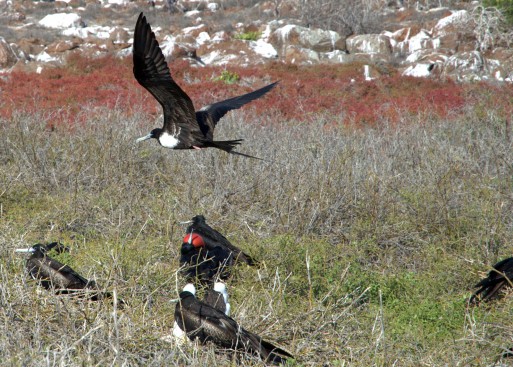
If the female likes his looks she will land. If they hit it off they will cross their beaks. Then the male will fly off and steal something as a present for the female. This proves that he is a good stealer and can help provide for the chicks.
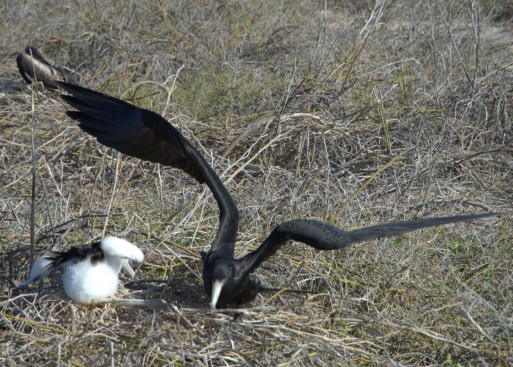
Frigate bird chicks are born mostly white and gradually develop the black feathers.
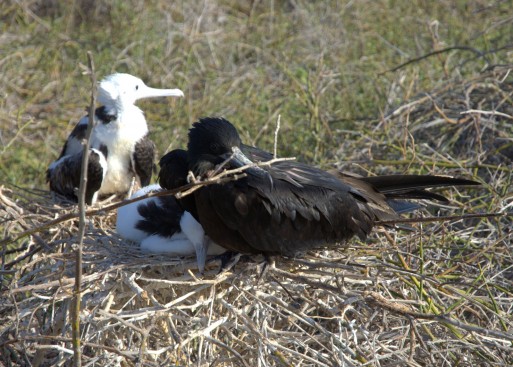
The parents take care of the chicks for about a year and a half, until they are big enough to steal for themselves.
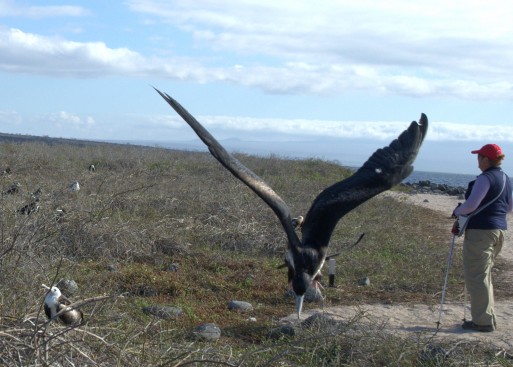
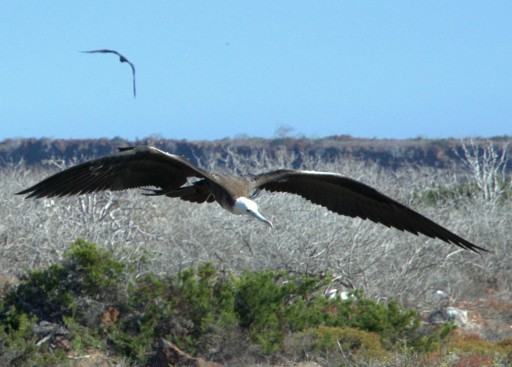
Blue footed boobies also nest here.
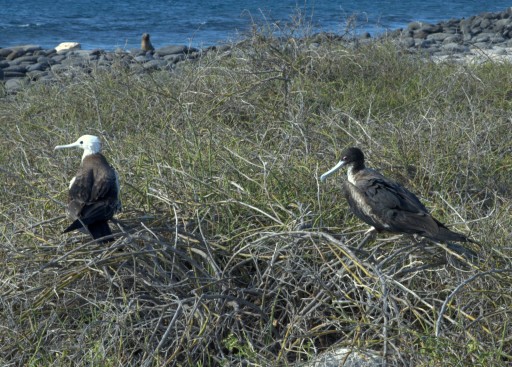
It’s not an ideal situation for them. The boobies typically lay 4 eggs and the frigate birds get 3 of them.

A booby feeds its chick, regurgitating food into its beak.
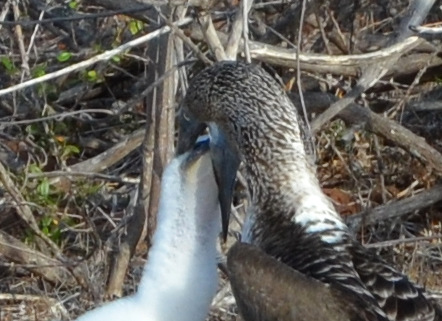
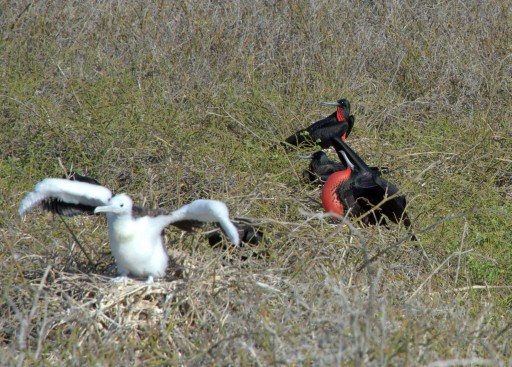
If the parent flies away too soon the frigate birds will grab the booby chick and shake it until it disgorges its meal.
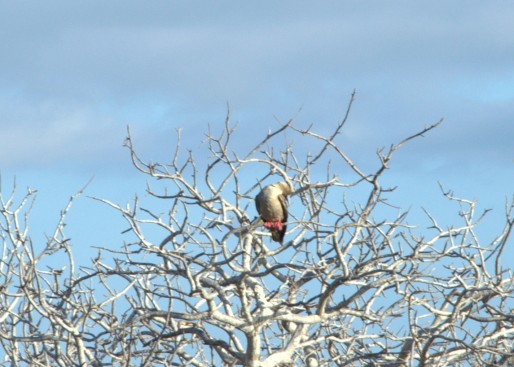
A red footed booby.
